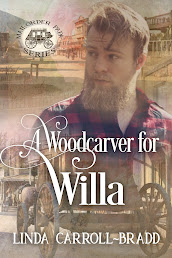Remember that day when you had your first ride on a carousel or merry-go-round? Maybe it was summer with a warm breeze teasing your hair as you watch the magical, colorful creatures spin by as you waited your turn. Then your mom or dad helped you choose which animal to ride. I always chose a white horse with a thick, unruly mane. I made sure to check if a name was painted on the strap across the animal’s chest. (In retrospect, I have to wonder what the strap was for because it’s not part of the saddle. But back to the memory…) For the duration of the ride (maybe two minutes), I imagined galloping across open fields on the back of this huge animal to the accompaniment of lilting music. My favorite was located in Tilden Park in Berkeley, California.
The carousel you probably envisioned in the above scenario is a mid-19th century invention. But the history actually dates back to an activity knights engaged in about the time of the Crusades. They rode horses in a circle and tossed balls back and forth. The game required both skill and horsemanship and helped trained the knights for doing a task with their hands while guiding the horse with their legs. |
| Grand Palace in Brussels mid-1500s-wikicommons |
In the 17th century, soldiers used swords to spear suspended metal rings and rip the string from its mooring. In some countries, the ring tilt replaced jousting. At celebrations, knights and noblemen rode in formation around a courtyard; sometimes, they stabbed at images of their enemies with swords. The most famous was held in 1662 by King Louis XIV at Tuleiries Palace to celebrate the birth of his heir.
 |
| Tulieries Palace-wikicommons |
During the 18th century, a carousel was invented that could be transported from fair to fair in a wagon. Carved animals were suspended by chains from the top of a central pole. An animal walked a circle, making the whole structure turn and the rider “flew” outward from the pole by centrifugal force.
By the mid-1900s, the platform carousel was invented where animals on poles were attached to a flat circle that rotated under animal power. Steam engine power was introduced in 1861, and by the early 1870s, an inventor named Savage devised a way for cranks to be added below the platform. The first moving ride contained boats and they moved as if on waves. Savage used the same mechanism on the poled animals so they moved up and down at the same time the whole structure circled. Interesting fact: carousels in UK turn clockwise and animals race to the left but those in US and Europe turn counterclockwise and animals face right.
By the early 1870s, several locations in New York state contained stationary platform carousels enjoyed by many in good weather. European immigrants brought the love of carousels to America, and soon individual cities developed a style. At Coney Island, saddles were elaborate and contained faux jewel. Philadelphia carousels featured more realistic saddles. A carousel at a county fair usually featured unsaddled horses. When music was added to the ride, many times the song was “Sobre Las Olas” translated to “Over the Waves” written by Juventino Rosas, a Mexican composer. (researched for Cherishing Caitlyn)BLURB: A Woodcarver for Willa, Mail-Order Papa multi-author series
For the past
six months, Willa Grantham has worked hard to maintain the livery stable that
thrived under her late husband’s care. Although she’s not looking for a second
love, she’s exhausted and lonely and knows life has more to offer. Her sister,
Larina, is in the same situation, so the widows place a dual ad in three
Eastern newspapers for a husband and hope for the best.
Woodcarver
Davet Sauville refuses to endure another cold, damp winter that endangers his asthmatic
son’s health. His late wife knew how to minister to the attacks, but Davet
feels inadequate. Although unorthodox, he responds to an ad for a mail-order
groom because of the widow’s mountainous location. Will a second-chance love
spark when these two lonely people find themselves under the same roof?
Amazon Preorder
link - releases September 4
I’m doing a
push to build my newsletter list and would love for you to join, if you’re not
already a subscriber. http://eepurl.com/bjKueH
Do you have a favorite carousel? Where was/is it located?



No comments:
Post a Comment